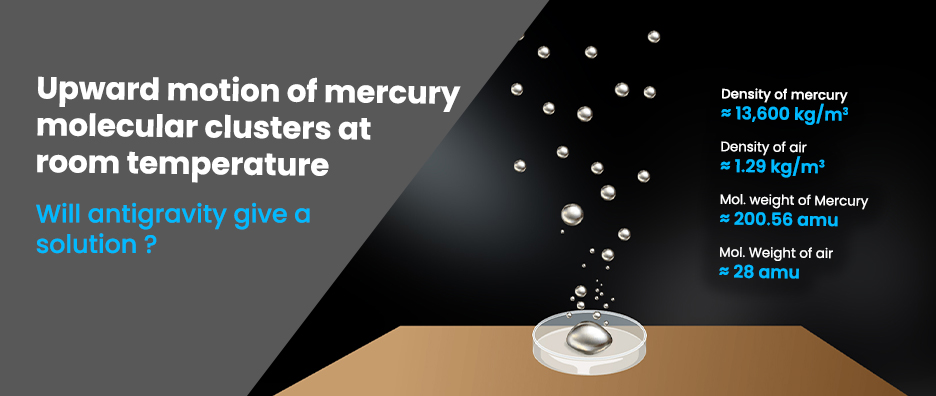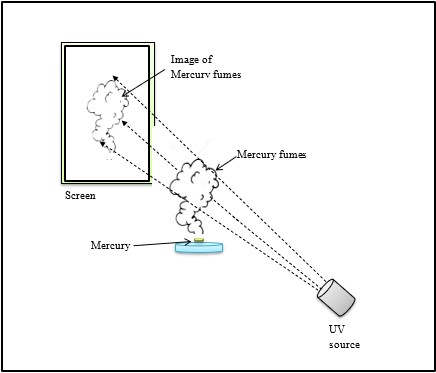
Accelerating expansion of universe
Accelerating expansion of universe The phenomenon ‘Accelerating Expansion of Universe’ (Perlmutter et al., 1998, Riess et al., 1998) is based on the observation that galaxies


Experimentally verified following observations cannot be explained by existing theories! They could, nevertheless, be easily explained by assuming a gravitational repulsion force in addition to the gravitational attraction force.
All fluids (liquid or gas) in the presence of gravity exert an upward force known as the buoyant force on any other substance. Therefore, any substance with lower density would float or rise through a higher density fluid. It is, nevertheless, observed that heavy particles, such as iodine, thorium and tungsten, which are heavier than air do rise not only in air but also in vacuum (Piyadasa, 2011).
Mercury is one of the very heavy metals, which are in liquid phase at room temperature. Mercury is ≈ 13,600 times denser than air. When exposed to air, mercury fumes are observed to rise up through air. Mercury fume is a visible cloud of cluster molecules or tiny liquid particles.
Molecular weight of mercury (200.56 amu) is more than seven (7) times higher than that of air (≈ 28 amu). Why does mercury, when exposed to air, rise up against the gravitational pull (see Video 1) exerted by the Earth? The rate of mercury rising through air increases with the temperature; almost doubles over an increase of 18 ֯C.
Video 1. Rising of mercury fume in still air, observed under UV light.
The rising mercury fumes are visible under UV light (wave length below 400 nm). To visualize mercury under UV light, a UV fluorescent screen has to be placed under the illumination of a UV light source as shown in the Figure 1.

See the following YouTube video that experimentally shows the rising mercury cluster molecules.
To see an image of an object under a certain light wavelength by naked eye, a basic principle is that, the dimensions of the object must be in the same order or greater than the light wavelength.
The above discussed experimentally verified observations cannot be explained by existing theories! They could, nevertheless, be easily explained by assuming a gravitational repulsion force in addition to the gravitational attraction force.
As gravitational attraction is caused by the mass, the gravitational repulsion is caused by the thermal energy. Please see Figure 2

Above experimental observation simply tells us that there is a cryptic force, which acts as a repulsive force against the direction of the gravitational pull (i.e., a repulsive force between earth and the mercury clusters). It also shows that this repulsive force is proportional to the temperature which is an indicator for amount of heat energy of the system under consideration.
References:

Accelerating expansion of universe The phenomenon ‘Accelerating Expansion of Universe’ (Perlmutter et al., 1998, Riess et al., 1998) is based on the observation that galaxies

Upward motion of condensed water droplets in still air Upward motion of water droplets when not supported by convection currents has been observed (Piyadasa, 2012),

What causes pressure in gases The Existing Model: Pressure is the force exerted by one substance on another per unit area. In the existing model,